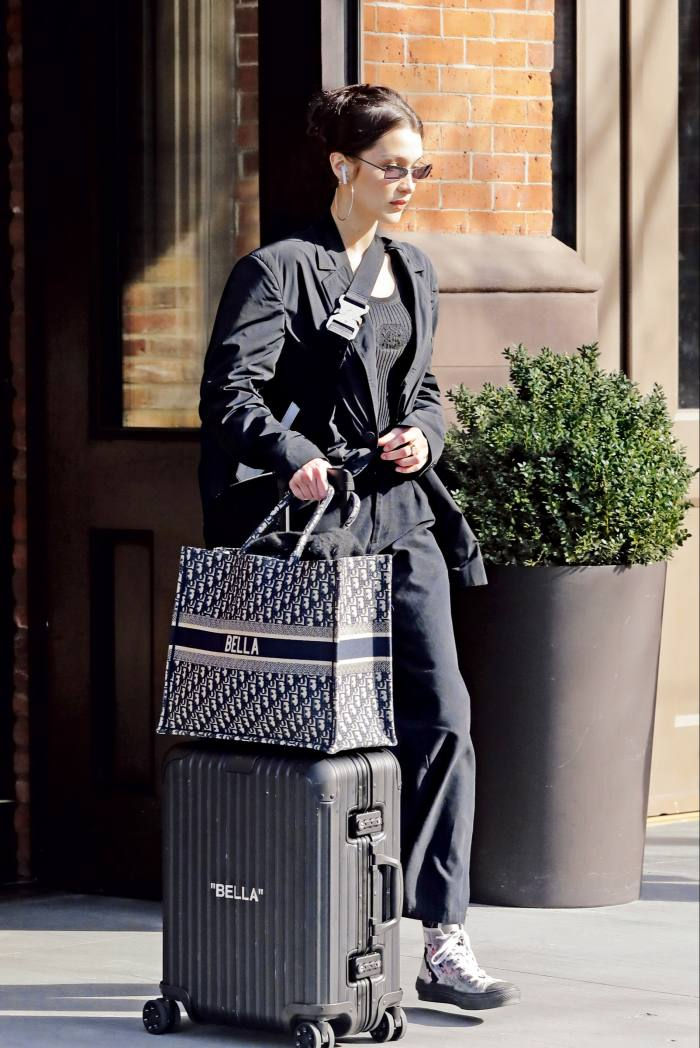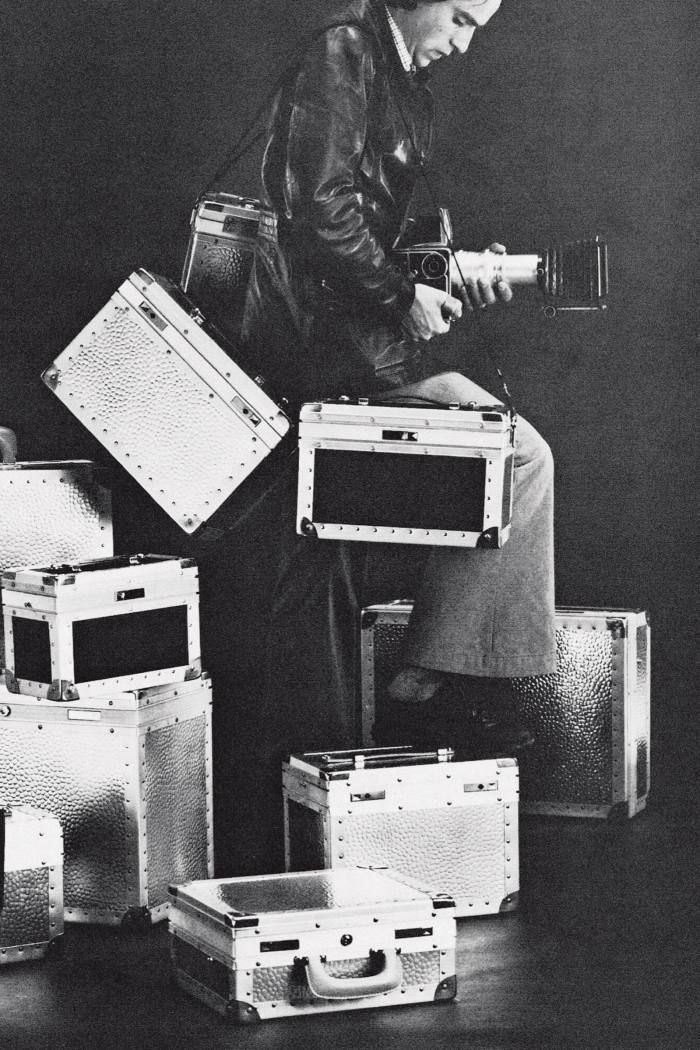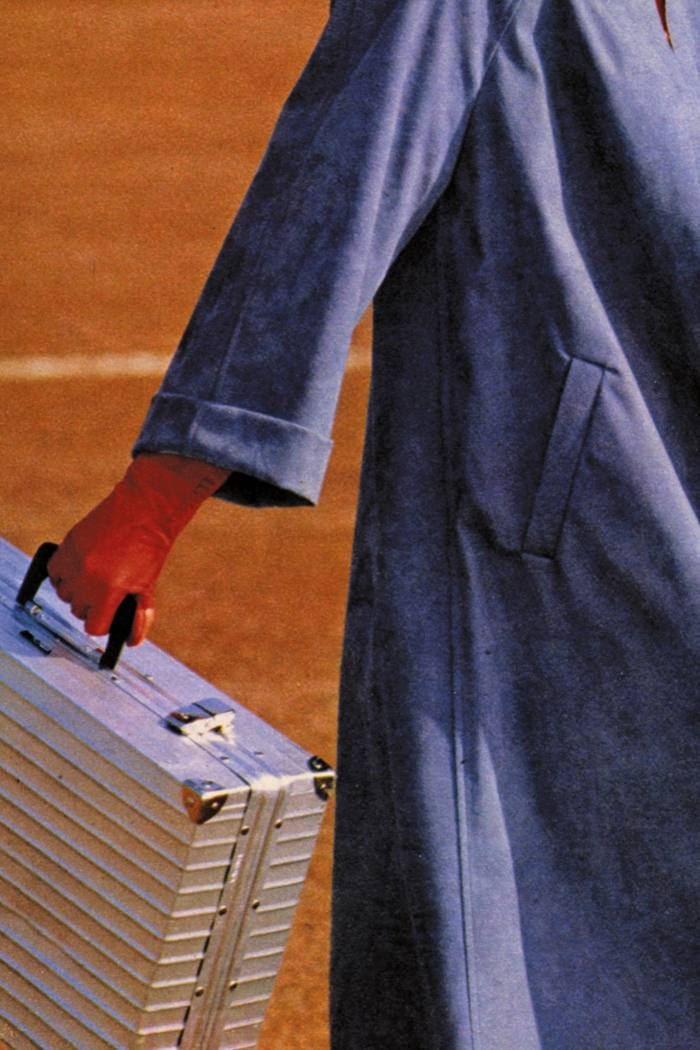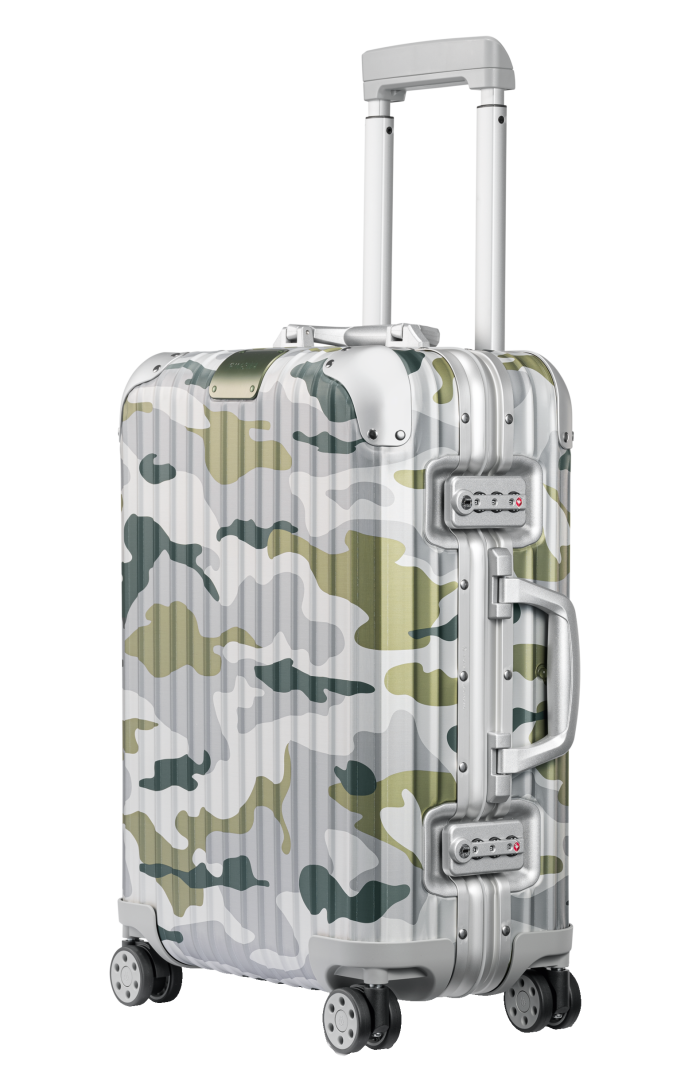Rimowa makes its case for the future of travel
- Tim Auld
- Nov 4, 2020
- 5 min read
How does a suitcase brand evolve in a post-travel age? The CEO of Rimowa explains
I’m not really a cross-body bag or mini-clutch kind of guy. So I’m trying to work out what it is about the dinky new collection of Rimowa “Personal” bags that makes me really want one.

The Duralumin handle on this vintage 1960s Rimowa case is crafted to resemble stitched leather © Christian Hagemann/Rimowa
It’s not just unchecked materialism; I’d like to think it’s more philosophical. If you own something you dearly love, what could make it just that little bit better? The answer: to own a mini version of that thing accurate in every detail to its big sibling. I don’t actually own a suitcase by the 122-year-old luggage company, but I want to – and if I did, I’d have to have a little €980 “Personal” to go with it (for preference in green from the latest Mojave Desert-inspired collection; but I might even settle for the pink version in “Desert Rose”).

Ditto the iPhone cover, with the company’s signature robust but glamorous-looking ribbed suitcase design diddily sized down; or its ultra-sweet mini take on a large travelling trunk that will keep three of your prized watches safe, however bumpy your travels (€1,600). “It’s basically unbreakable. We tried everything on it to make sure it was,” says Alexandre Arnault, 28-year-old CEO of the company.

Arnault has been at the helm of Rimowa for three years since LVMH – of which his father, Bernard, is chairman – bought an 80 per cent stake in the historic German company for €640m: Dieter Morszeck, grandson of the firm’s original founder, is co-CEO (the brand name comes from the first two letters of his father Richard Morszeck’s name, plus the first two of Warenzeichen, which means trademark). In 2019, LVMH’s profits in fashion and leather goods were up €7.3bn on the previous year, an increase of 24 per cent. As LVMH doesn’t give details of its individual brands’ performance, it’s hard to know how much of that was down to Rimowa, but it confirmed that, in 2019, Rimowa “experienced good progress”. At a Goldman Sachs event earlier this year, Alexandre Arnault gave no more detail than to say that Rimowa had surpassed the $485m it was making when he came on board. As is the challenge with so many august and much-beloved companies, Arnault must find ways to innovate without losing sight of the company’s illustrious past. Moreover, he must build on a business founded on luxury travel – and, let’s face it, suitcases – in the time of a pandemic that has all but grounded leisure flights.
"People will not return to travelling as much, however they’ll still need to go from point A to B"
Alexandre Arnault, CEO of Rimowa
Rimowa started out as a small saddlery firm in Cologne in 1898 but, with the growing demand for tourism in the early years of the 20th century, quickly moved into luggage, creating the kinds of suitcases and trunks that could have come straight from the pages of an EM Forster novel. Men’s cases where the inside would open out vertically with a rail to hang coats, jackets and trousers; women’s cases with lids that flipped down when hung up in a car or train to allow a wardrobe of dresses to hang straight.

The trademark aluminium ribbed case – modern iterations of which are the must-have travelling companions of Roger Federer, Kim Jones, Gwyneth Paltrow, David Beckham – was first made in the 1930s. Its design was a nod to the corrugated fuselage of the Junkers F13, the first all-metal commercial aircraft launched in 1919. As well as aluminium, Rimowa now also makes ribbed cases from polycarbonate, but the fundamental qualities remain: lightness and extreme durability. A Rimowa case is not just for Christmas, but for life. As Tyler Brûlé writes in his introduction to a new history of the brand, Rimowa: An Archive, Since 1898: “The key difference [between owning a collection of vintage cars and] owning a collection of Rimowa is that you don’t mind whether they get scratched or bruised, dinged or dented… a Rimowa wears its adventures on its shell.”


Among the more recherché pieces the company has made over the years is a bar‑cart case that could hide a human upright like an Egyptian mummy (not even the archivists know quite what or whom it was made for); a circular canister for a DJ’s record collection; a double-bass case; and a one-off case with teeth dents, as if it had been bitten by a crocodile. There have been humidity-proof boxes for film-camera equipment; meanwhile, the Rimowa metal attaché case has been one of the most ubiquitous props in spy thrillers since it was first made in the ’60s.
According to Arnault, the “Personal” bag, the watch case, the iPhone cases and this summer’s debut sunglasses collection represent a shift “from being a pure travel brand to a brand oriented to mobility”. Of course, the company had started work on this change of emphasis before Covid-19. But it’s turned out to be a salutary moment to redefine our use of luggage. “Basically, we think that people will not return to travelling as much as they used to right now,” he says, speaking from the Rimowa offices in Paris. “However, they’ll still need to go from point A to B, whether it’s to work, to see their family, or whatever. And on those journeys, I really think our brand can be present in the way it was in the past. Covid-19 hasn’t made us pivot any quicker – when we launched eyewear in July, we had started thinking about it before Covid existed – but it has made us focus more closely on these kinds of products.”
In the future, the brand will move further into “soft products”, says Arnault. “We’re developing and launching, late this year or early next year, backpacks, weekend bags, things you can have on you every day. Again, it’s this idea of mobility, but also linked a bit more to travel – you rarely see someone just carrying a suitcase in an airport. They also have a carry-on bag or backpack.”

And they won’t be made of leather. “Well, a little bit of leather,” says Arnault, “but not too much because we don’t want to become like all the others. I think we want to stay in what I call functional luxury. We’ll maybe look at using more technical nylons with aluminium zippers. We want to make sure that the products are super‑lightweight and super-usable.” And what about sustainability? “As of now, the materials we use in the bags are very eco-friendly, but they are not coming from recycled sources yet. We have products in the pipeline that will come out more mid to late next year in the suitcase range that will use bio-organic yarns.”


Important to Arnault’s success at Rimowa pre-Covid have been collaborations with fashion houses such as Dior and Fendi, but also with streetwear brands Supreme, which sold out in seconds in 2018, and Virgil Abloh’s Off-White. Of these, Arnault says, “I think doing this allowed us to reach a new audience without hurting our existing audience, because our existing audience are superfans of the brand and as long as we don’t do things that are unthinkable, I don’t think we’d lose them. We didn’t collaborate with Supreme because it targets millennials, right? We collaborated with Supreme because we shared the same DNA. We would not have done it just to tick a box.”
Back in the late 1970s, Rimowa made a suitcase that incorporated a radio, with a great big unwieldy aerial sticking out of it. Under Arnault, it has just released a suitcase in collaboration with Moncler that has an illuminated digital readout on its side – you can use an app to put up little messages for fellow passengers to read. It’s a gimmick, albeit quite a sweet one. But Arnault is clear that technological gimmickry – ie, the smart case – is not the future for Rimowa: “Our value proposition is selling a product that will last for ever and never break. It is not to offer the latest tech and GPS tracker, because there is no tech to date that you can embed in a suitcase that will still be relevant in 10 years’ time.” Dinged and dented by recent events it may be, but it seems Rimowa plans to remain the real thing.
Comments